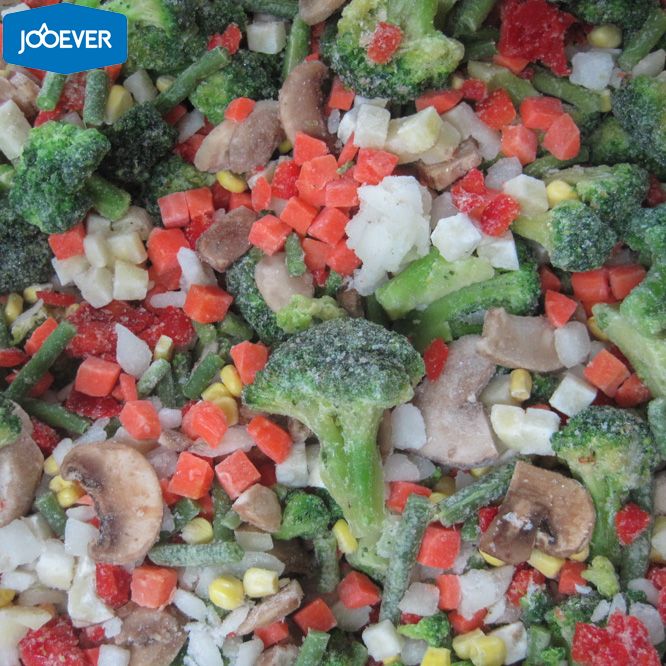If you’ve ever found yourself with a bag of frozen vegetables and wondered if you can fry them without turning them into a soggy mess, the answer is yes! In fact, frying frozen vegetables can preserve their nutrients and bring out rich flavors, all while being quick and easy. Let’s walk through why frozen veggies can sometimes be a better option than fresh ones, and how to fry them perfectly.

Why Frozen Vegetables Can Be Healthier Than Fresh
Frozen vegetables often have a nutritional edge over fresh ones. As soon as vegetables or fruits are harvested, they begin losing nutrients and oxidizing. The freezing process locks in nutrients, keeping them intact for longer periods. Unlike fresh produce that may sit in a warehouse, be transported across long distances, and then linger on grocery store shelves, frozen veggies are generally flash-frozen within hours of being harvested. This helps to lock in their vitamins and minerals, making them a great option for your meals.
The Right Way to Fry Frozen Vegetables
Now, I’ll admit that I wasn’t always a fan of frozen vegetables. In my mind, they were mushy, wilted, and just didn’t appeal to me. But after some experimentation, I’ve discovered a method that works wonders for frying frozen veggies without compromising texture or taste. It’s easy, fast, and best of all, you don’t have to defrost the vegetables first!
Here’s how you can make a quick and delicious stir fry with frozen vegetables in under five minutes:
1. Heat Up Your Pan
Start by heating your wok or skillet on high heat. You want to use a high-smoke-point oil—coconut oil works great, but any vegetable oil will do as long as it can handle high heat. Add about a heaping tablespoon of oil and let it heat up. You don’t want it to smoke, but you do want it nice and hot.
2. Add the Frozen Vegetables
Take your frozen stir fry mix straight from the bag and add it to the pan. No need to defrost them first! The key is to not overcrowd the pan. You need to give the vegetables plenty of room to make contact with the hot pan, which helps them cook quickly and prevents them from becoming soggy. Keep the heat on high to help evaporate the water quickly.
3. Season for Flavor
Frozen stir fry mixes often contain a variety of vegetables like water chestnuts, baby corn, red peppers, broccoli, carrots, and onions. But if your mix is missing onions (which I think are essential for flavor), go ahead and add some. Garlic and ginger also make a great addition to stir fry, adding depth and brightness to the dish. Once the vegetables start to brown, add in a couple tablespoons of oyster sauce and a teaspoon of soy sauce. Stir it all together and let the flavors meld.
4. Serve and Enjoy
Once everything is cooked to your liking, your stir fry is ready to serve! You won’t get the crisp texture you’d find in fresh vegetables, but you will have a tasty, nutrient-packed dish that’s quick and satisfying.
The Benefits of Frying Frozen Vegetables
Frying frozen vegetables directly without thawing them prevents the dreaded mushiness that often occurs when you try to defrost and cook them. The high heat helps evaporate the excess moisture, leaving you with vibrant vegetables that are still packed with nutrients. Not only is this method fast and convenient, but it’s also a great way to ensure you’re getting the most out of your frozen vegetables.
FAQs
1. Can you fry frozen vegetables directly from the freezer?
Yes! You can fry frozen vegetables directly from the freezer without thawing them first. This helps preserve their texture and nutrients while ensuring they cook quickly without getting soggy.
2. Why are frozen vegetables sometimes better than fresh?
Frozen vegetables are often flash-frozen right after harvest, locking in nutrients and preserving their freshness. In contrast, fresh produce can lose nutrients during transport and while sitting on store shelves for days or weeks.
3. How can I prevent my stir fry from getting soggy?
To prevent sogginess, make sure your pan is hot before adding frozen vegetables. Use enough oil to coat the pan and avoid overcrowding the pan. The goal is to allow the vegetables to make direct contact with the hot surface to evaporate excess moisture quickly.
